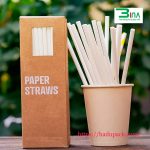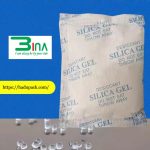Mô tả
Túi Polyethylene (PE) so sánh với túi Polypropylene (PP)
Nếu bạn đang tìm kiếm túi PE nhựa polyethylene (PE) và túi polypropylene (PP) là hai loại vật liệu phổ biến nhất mà bạn sẽ gặp. Trong khi một số người cho rằng hai loại nhựa này có thể thay thế cho nhau, thì thực tế chúng là hai loại vật liệu riêng biệt. Một số điểm khác biệt dễ thấy hơn những điểm khác, với mức độ mờ đục khác nhau giữa hai loại. Tuy nhiên, có nhiều điểm khác biệt hơn khiến các loại nhựa nhiệt dẻo này trở nên khác biệt. Nếu bạn cần bao bì cho các ứng dụng rất cụ thể, bạn sẽ cần nắm rõ ưu và nhược điểm của cả hai loại vật liệu.
 |
 |
Túi Polyetylen (PE) là gì?
Polyetylen (PE) là một trong những loại nhựa có khả năng phục hồi tốt nhất hiện nay. Ngoài độ bền đáng kinh ngạc, nó còn có khả năng chống rách. Hơn nữa, đây là loại nhựa cực kỳ linh hoạt. Những đặc điểm này kết hợp lại với nhau để tạo ra một giải pháp đóng gói chắc chắn, phù hợp với các mặt hàng cồng kềnh.
Túi polyetylen và lớp lót polyetylen thường được sử dụng trong các môi trường công nghiệp, với bản chất cứng cáp, hoàn hảo để lưu trữ các mặt hàng nặng như phụ tùng máy móc và phụ tùng thay thế. Tuy nhiên, tính chất bảo vệ của chúng cũng có thể được sử dụng trong các môi trường hoàn toàn khác. Vì túi polyetylen chỉ trong suốt một phần nên chúng cũng bảo vệ đồ đạc khỏi tác hại của tia UV. Điều này khiến chúng trở nên lý tưởng để lưu trữ các vật liệu mỏng manh có thể bị phai màu khi tiếp xúc với ánh nắng mặt trời. Chúng thậm chí còn được sử dụng làm giải pháp lưu trữ các tác phẩm nghệ thuật vô giá và hiện vật lịch sử.
Có một số loại nhựa polyetylen, trong đó loại được sử dụng rộng rãi nhất là polyetylen terephthalate (PET). Loại nhựa PE này được sản xuất và có nhiều ứng dụng. Các ứng dụng phổ biến bao gồm đóng gói thực phẩm, sản xuất chai đựng đồ uống, tạo ra vật liệu sợi nhỏ, v.v.
Polyethylene mật độ thấp (LDPE) là một lựa chọn khác. Loại nhựa này không chỉ mềm dẻo mà còn khá không thấm nước. Điều này có nghĩa là nó có khả năng chống ẩm ấn tượng. Nó cũng chịu được va đập tốt, chống hóa chất và có thể chịu được nhiệt độ khắc nghiệt. Nó thường được sử dụng trong bao bì bảo vệ như màng xốp bong bóng và màng căng nhưng chủ yếu được sử dụng để sản xuất túi nhựa. Polyethylene mật độ cao (HDPE) bền hơn đáng kể so với LDPE, nhưng có một số thỏa hiệp khi nói đến tính linh hoạt.
 |
 |
Túi Polypropylene (PP) là gì?
Bạn đang tìm kiếm một giải pháp đóng gói trong suốt hơn? Với độ trong suốt đặc biệt, túi polypropylene là lựa chọn hiển nhiên. Vì chúng ít đục hơn so với các loại túi PE tương tự, loại túi poly này là lựa chọn lý tưởng để đóng gói thực phẩm. Ngoài độ trong suốt, túi polypropylene còn được đánh giá cao về độ bền và tính linh hoạt.
Hơn nữa, độ bền kéo cao của polypropylene khiến nó rất hiệu quả để lưu trữ hàng hóa hoặc chuẩn bị vận chuyển. Cấu trúc linh hoạt của nó khiến nó trở thành vật liệu dễ gia công, bất kể vật phẩm có hình dạng kỳ cục như thế nào, đồng thời bảo vệ khỏi vết lõm và trầy xước. Mức độ thấm thấp làm cho túi polypropylen phù hợp hoàn hảo với các sản phẩm thực phẩm, ngăn chặn các chất gây ô nhiễm và vi khuẩn có hại.
Độ trong suốt của vật liệu này cũng hữu ích cho khách hàng. Bằng cách cung cấp tầm nhìn rõ ràng về các sản phẩm bên trong, người tiêu dùng không phải mạo hiểm khi giao tiền khó kiếm được của mình. Mặc dù túi polypropylen có nhiều lợi ích, chúng vẫn là một lựa chọn phải chăng và có thể thoải mái đối phó với nhiều điều kiện môi trường khác nhau.
 |
 |
Ưu điểm của túi PE (polyetylen)
Mặc dù túi polyetylen có xu hướng đắt hơn túi polypropylen, nhưng chúng có nhiều lợi ích hấp dẫn. Ngoài khả năng chống rách và độ bền đặc biệt, bản chất linh hoạt của polyetylen mang lại cho nó lớp hoàn thiện mềm mại đáng ngạc nhiên. Điều này có nghĩa là khi được sử dụng làm bao bì, túi polyetylen sẽ không gây hư hại cho các vật phẩm bên trong.
Túi polyetylen có khả năng chịu nhiệt độ lạnh, khiến chúng trở thành lựa chọn tốt để lưu trữ các vật phẩm trong điều kiện giá lạnh như nhà kho được sưởi ấm kém. Bụi và bụi bẩn cũng được ngăn chặn, trong khi điện tích tĩnh tương đối thấp có nghĩa là bạn không phải lo lắng về sức khỏe và an toàn nữa.
 |
 |
Ưu điểm của túi Polypropylene
Nếu bạn đang tìm kiếm một loại túi poly nhẹ và bền, thì túi polypropylene jones là một lựa chọn dễ dàng. Lý tưởng để sử dụng trong các ngành chế biến và sản xuất thực phẩm, túi polypropylene phải tuân thủ đầy đủ các quy định mới nhất và khuyến nghị của ngành nếu bạn lấy chúng từ một nhà cung cấp hợp pháp.
Hơn nữa, mặc dù có độ bền kéo đặc biệt, nhưng chúng vẫn cực kỳ linh hoạt, khiến chúng trở thành một giải pháp đóng gói đa năng. Điểm nóng chảy cao cũng mang lại sự an tâm và mở rộng ứng dụng, trong khi bạn có thể yên tâm rằng đồ đạc được bảo vệ khỏi hơi nước bên ngoài, độ ẩm và các chất gây ô nhiễm có hại. Bạn cần thuyết phục hơn nữa? Trong hầu hết các trường hợp, túi polypropylene cũng rẻ hơn túi polyethylene.
 |
 |
Khả năng chịu hóa chất và nhiệt
Nếu bạn có kế hoạch sử dụng túi poly trong những môi trường khắc nghiệt hơn, bạn sẽ cần cân nhắc đến đặc tính chịu nhiệt và chịu hóa chất của từng loại. Bao bì của bạn có tiếp xúc với hóa chất và tác nhân ăn mòn không? Mặc dù túi polyethylene thường bền hơn túi polypropylene, nhưng loại sau lại vượt trội hơn loại kia khi nói đến khả năng chịu hóa chất.
Túi PP cũng có khả năng chịu nhiệt độ cực cao tốt hơn nhiều so với túi PE. Túi PP có thể chịu được nhiệt độ cao lên tới 340 độ F, trong khi túi PE chỉ có thể chịu được nhiệt độ cực cao khoảng 240 độ F. Tuy nhiên, túi PE lại vượt trội hơn về khả năng chịu nhiệt độ cực thấp. Chúng có thể chịu được nhiệt độ thấp tới -110 độ F. Ngược lại, túi PP bắt đầu mất đi tính toàn vẹn về mặt cấu trúc khi chúng vượt qua ngưỡng đóng băng.
 |
 |
Túi Poly có thể tái chế được không?
Với nhiều doanh nghiệp đang tìm cách đưa ra những lựa chọn bền vững hơn, một câu hỏi bạn có thể đặt ra là liệu túi PE và PP có thể dễ dàng tái chế hay không. Tin tốt là cả hai loại nhựa nhiệt dẻo đều dễ tái chế, chỉ cần nhiệt độ cao là có thể làm tan chảy và định hình lại vật liệu thành dạng mới. Tuy nhiên, polyethylene có xu hướng được tái chế nhiều hơn polypropylene.












Đánh giá
Chưa có đánh giá nào.